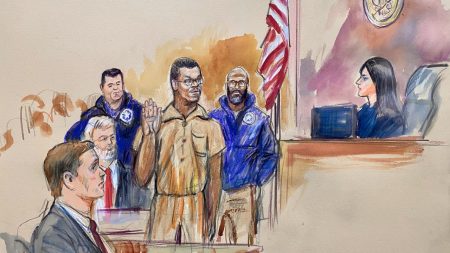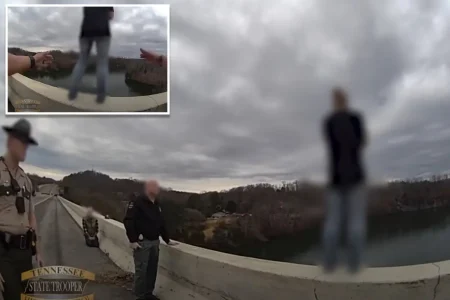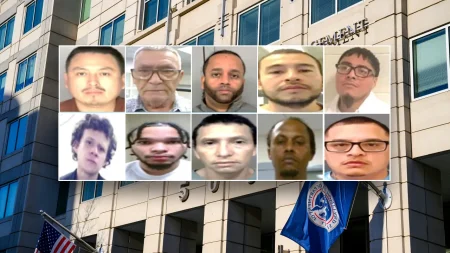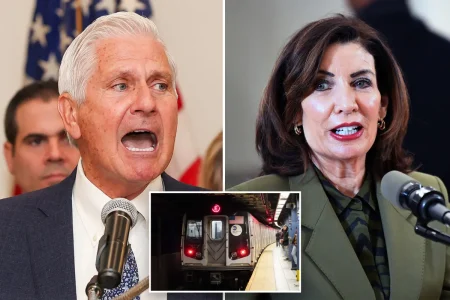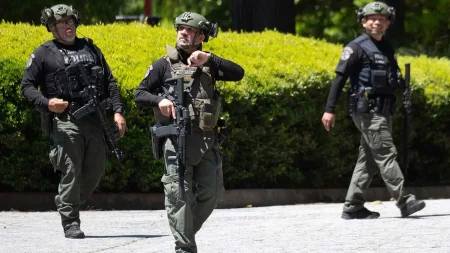Missouri Republicans Push Redistricting Plan with Presidential Implications
In a significant political maneuver, Missouri Republicans recently secured a legislative victory for President Donald Trump by approving a redistricting plan that could potentially shift the balance of power in the U.S. House of Representatives. The Senate’s approval of this plan now moves it to Republican Governor Mike Kehoe’s desk, who has expressed his intention to sign it into law promptly. This redistricting effort represents more than just a state-level decision; it’s part of a broader national strategy with implications for the 2026 midterm elections. However, the battle isn’t over, as opposition groups like “People Not Politicians” have already announced plans for a referendum petition that could ultimately put the decision in the hands of Missouri voters rather than politicians. “This fight is not over. Missouri voters — not politicians — will have the final say,” declared Elsa Rainey, a spokesperson for the group leading this referendum effort.
Missouri joins Texas and California in pursuing mid-decade redistricting this year, highlighting an emerging national contest for partisan advantage ahead of critical elections. While redrawing congressional districts typically follows the decennial census to account for population shifts, these mid-term adjustments reveal the high stakes in the current political landscape. Texas Republicans passed a map designed to help their party gain five additional seats, while California Democrats countered with their own plan aiming for similar gains on their side of the aisle, though that plan still requires voter approval. With Democrats needing just three seats to win control of the House—which would allow them to potentially obstruct Trump’s agenda and launch investigations—each redistricted seat could prove decisive. President Trump himself acknowledged the significance of this move, celebrating Missouri’s “much fairer, and much improved, Congressional map” on social media, noting it “will help send an additional MAGA Republican to Congress in the 2026 Midterm Elections.”
The revised Missouri map specifically targets Kansas City’s district, currently represented by Democratic Congressman Emanuel Cleaver. Republicans, who already hold six of Missouri’s eight U.S. House seats, have restructured Cleaver’s district by removing portions of Kansas City and extending it into predominantly Republican rural areas. This reconfiguration notably reduces the number of Black and minority residents in the district, partly by creating a dividing line along a street that has historically served as a segregation boundary between Black and white residents. The changes could significantly impact Cleaver’s electoral prospects, despite his strong history in the district—he was Kansas City’s first Black mayor and has served in Congress for over two decades, winning his last two elections with more than 60% of the vote under the districts adopted after the 2020 census.
The redistricting plan was passed by the Republican-led Senate after changing the chamber’s rules and shutting down Democratic opposition—tactics that have further inflamed political tensions in the state. Senate Minority Leader Doug Beck has announced plans to assist in gathering the more than 100,000 signatures needed within 90 days to force a referendum on the plan. Meanwhile, Governor Kehoe has framed the reshaped districts as a way to amplify “Missouri’s conservative, common-sense values” in Washington, D.C. The special session called by Kehoe also included a proposal that would make it harder for citizen-initiated constitutional amendments to win voter approval, requiring future initiatives to pass in each of Missouri’s congressional districts rather than by a simple statewide majority—a standard no other state currently employs.
Congressman Cleaver has not accepted these changes quietly. He has vowed to challenge the new map in court and intends to seek reelection in 2026, regardless of how his district is ultimately shaped. “Together, in the courts and in the streets, we will continue pushing to ensure the law is upheld, justice prevails, and this unconstitutional gerrymander is defeated,” Cleaver stated firmly after the Senate vote. His determination reflects the significant impact these changes could have on representation for his constituents, particularly minority communities that would see their electoral influence diluted under the new boundaries. The redrawing has drawn criticism not just for its partisan implications but also for how it affects demographic representation in a historically significant district.
Legal challenges to the redistricting plan have already begun to mount. Two lawsuits have been filed, including one on behalf of voters arguing that mid-decade redistricting violates the Missouri Constitution. Another lawsuit previously filed by the NAACP is scheduled for a hearing, adding to the legal pressure against the plan. These legal challenges, combined with the proposed referendum, mean that despite legislative approval, the fate of Missouri’s congressional map remains uncertain. The situation highlights the intense struggles over electoral representation occurring across the country, where the drawing of district lines has become a crucial battleground in determining which party will control Congress—and by extension, the direction of national policy—in the coming years. What happens in Missouri could serve as both precedent and strategy for similar efforts in other states as both parties jockey for advantage in an increasingly polarized political landscape.






